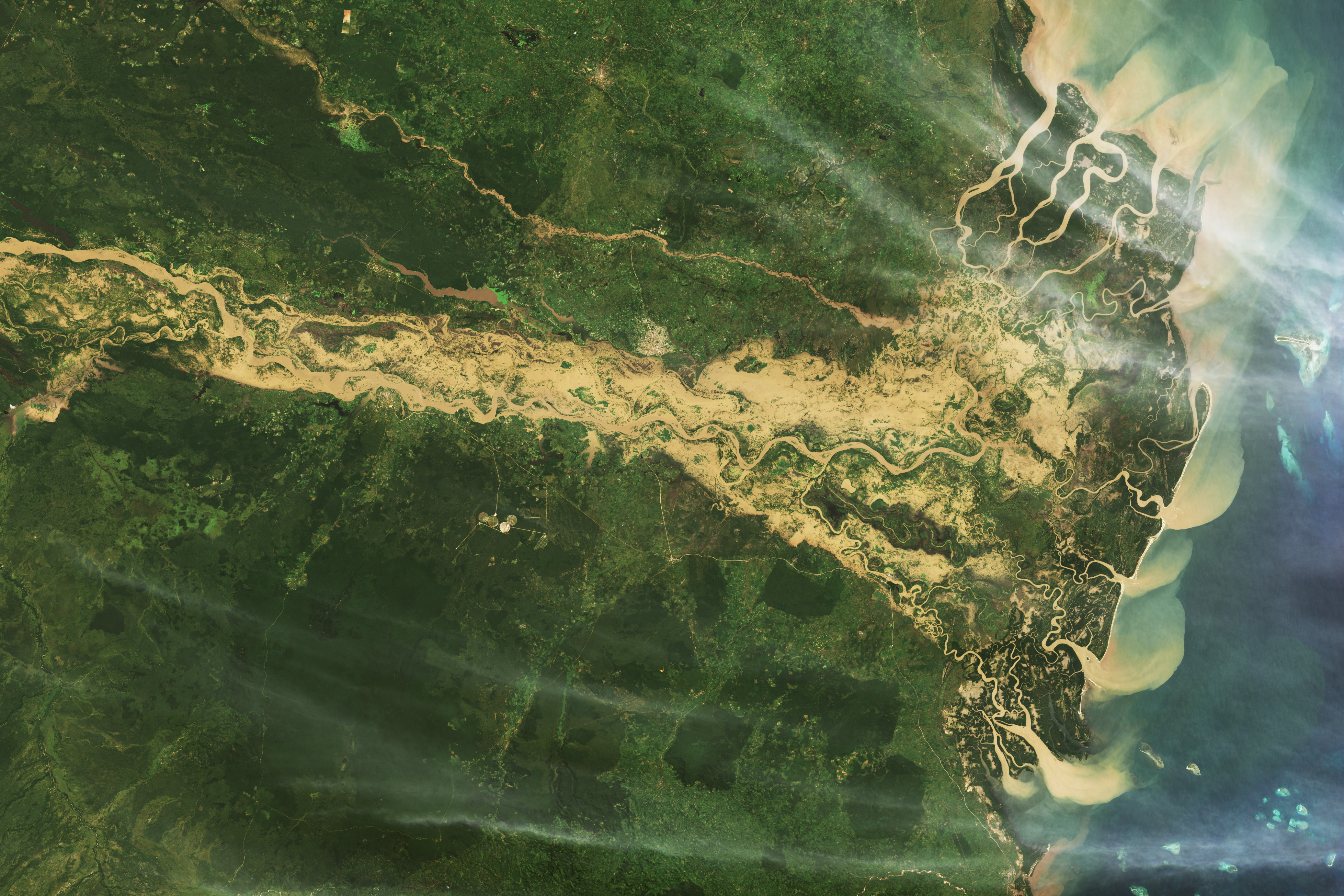NASA’s Ames Research Center in Silicon Valley invites members of media to cover the 2017 solar eclipse at a public eclipse-viewing event held at the center on Aug. 21, 2017, beginning at 8 a.m. PDT.
Maximum coverage of the Sun at Ames will be 74 percent, and will occur at 10:15 a.m. Ames will provide safe viewing glasses for registered attendees to watch the partial eclipse outside at Ames, and will have limited indoor seating for attendees to view an extensive NASA Television broadcast, called Eclipse Across America: Through the Eyes of NASA.
The televised program will feature views from NASA research aircraft, high-altitude balloons, satellites and specially-modified telescopes. It also will include live reports from Charleston, as well as from Salem, Oregon; Idaho Falls, Idaho; Beatrice, Nebraska; Jefferson City, Missouri; Carbondale, Illinois; Hopkinsville, Kentucky; and Clarksville, Tennessee.
The public event registration is at capacity, and registration is closed.
News media who wish to attend the event at Ames must contact Tiffany Blake at 650-604-4789 or by email at tiffany.n.blake@nasa.gov by 3 p.m. on Aug. 18, 2017.
News media are invited to follow NASA coverage of the eclipse and use resources NASA is making available.
NASA App
- NASA App for iOS — http://itunes.apple.com/app/nasa-app/id334325516?mt=8
- NASA App for Android — https://play.google.com/store/apps/details?id=gov.nasa
- NASA App for Amazon Fire and Fire TV — http://amzn.com/B00ZVR87LQ
- The NASA App also is available to Apple TV users.
Social Media
- Facebook Live — https://www.facebook.com/NASA/videos/10155497958441772/
- Twitter/Periscope — https://www.pscp.tv/nasa
- Twitch TV — https://twitch.tv/nasa
- Ustream — http://www.ustream.tv/nasahdtv
- YouTube — https://www.youtube.com/watch?v=wwMDvPCGeE0
Embedding Streams
- Ustream coverage: <iframe width=”480″ height=”270″ src=”http://www.ustream.tv/embed/6540154?html5ui” scrolling=”no” allowfullscreen webkitallowfullscreen frameborder=”0″ style=”border: 0 none transparent;”></iframe>
- YouTube video: <iframe width=”560″ height=”315″ src=”https://www.youtube.com/embed/wwMDvPCGeE0″ frameborder=”0″ allowfullscreen></iframe>
- Facebook Live player: <iframe src=”https://www.facebook.com/plugins/video.php?href=https%3A%2F%2Fwww.facebook.com%2FNASA%2Fvideos%2F10155497958441772%2F&show_text=0&width=476″ width=”476″ height=”476″ style=”border:none;overflow:hidden” scrolling=”no” frameborder=”0″ allowTransparency=”true” allowFullScreen=”true”></iframe>
NASA TV Feeds
NASA TV on Galaxy-13
NASA TV channels are digital C-band signals, carried by QPSK/DVB-S modulation on satellite Galaxy-13, transponder 11, at 127 degrees west longitude, with a downlink frequency of 3920 MHz, vertical polarization, data rate of 38.80 MHz, symbol rate of 28.0681 Mbps, and 3/4 FEC. A Digital Video Broadcast (DVB) compliant Integrated Receiver Decoder (IRD) is needed for reception.
NTV-1 (Public-Education) HD Program = 101 (NTV-1)
Compression Format = MPEG-2, Video PID = 0x112 hex / 274 decimal, AC-3 PID = 0x113 hex / 275 decimal, MPEG I Layer II Audio PID = 0x114 hex / 276 decimal. NASA also is providing an un-captioned KU feed for this event only on Galaxy 17, Transponder TBD.
NTV-3 (Media) HD Program = 103 (NTV-3)
Compression Format = MPEG-4, Video PID = 0x1031 hex / 4145 decimal, AC-3 Audio PID = 0x1034 hex /4148 decimal, MPEG I Layer II Audio PID = 0x1035 hex /4149 decimal. NASA also is providing a raw feed on the Verizon AVOC. The transmit circuit numbers are 36 TBGS 101315 AVOC TX 1 and 36 TBGS 101321 AVOC TX 2. Media requesting this connection must contact Verizon directly and have previously had presence on the AVOC.
Details of individual video feeds are available at:
All content and times are subject to change in real-time and without notice.
For more details and a broadcast timeline, visit:
In addition to the NASA TV broadcast, live video streams from locations across the country will be available at:
To view and download NASA eclipse images, visit:
For NASA recommendations for safely viewing the eclipse, visit:
NASA imagery and videos can be used with the proper credit, unless labeled otherwise. For more information, please see NASA’s media usage guidelines at:
-end-
Tiffany Blake
Ames Research Center, Silicon Valley, Calif.
650-604-4789
tiffany.n.blake@nasa.gov
Text issued as Ames media advisory 17-011AM


























